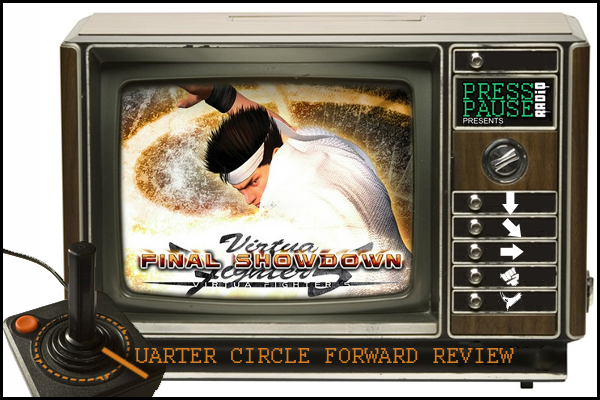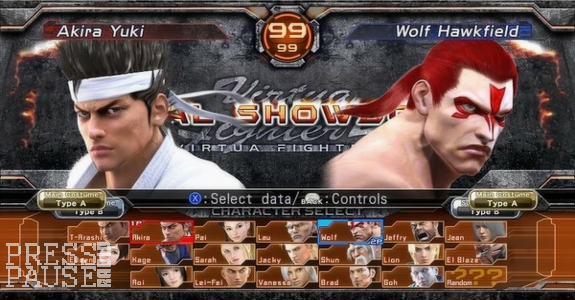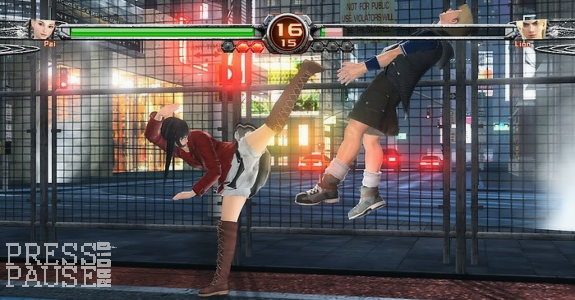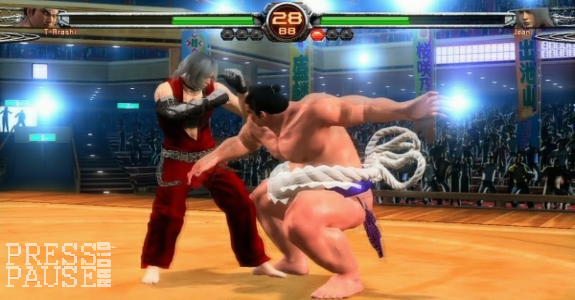QCF: Virtua Fighter 5: Final Showdown

Swift smash cuts electrify the screen as Virtua Fighter’s darling poster child, Akira Yuki, performs his signature Hakkyoku-ken attacks to demonstrate a raw display of strength in Sega-AM2’s latest production, Virtua Fighter 5: Final Showdown. It’s been four years since we’ve seen Virtua Fighter hit the scene. And even though it’s been quiet on the western fighting front, the land of the rising sun has been treated to additional content and refinements that we’ve been missing out on up until Final Showdown. However, with the act of annual fighting game re-releases becoming a trend this generation, is Final showdown is worth your hard-earned space bucks?
The simple answer is a yes -- a hard hitting, mind-blowing yes.
Final Showdown nails the one thing most re-releases fail to establish within the first hour of play -- a real sense of vindication for your return visit. Previously, the technical aspects behind the fighting in Virtua Fighter engines have driven away casual comers. Final Showdown has (no pun intended) finally conveyed a broad grasp towards it intuitive feel that universally appeals to anyone, be it if they’re new to the series or even a veteran since the Saturn days.

The core fighting mechanics for all twenty characters in the roster -- eighteen returning and two brand new characters to the entry -- haven’t just been refined, but rather completely rebuilt. New mechanics of offensive maneuvers allow you to fluidly change up your assault by aggressively side-stepping within one stride, while initiating your strike from a quicker vantage as opposed to a full frontal approach. In contrast, subtle tweaks have changed weight distribution in attacks and character animations, adding a completely new evasion mechanic that creates a dynamic and reflexive relationship between what your eyes see and what input you choose to respond with; this sense of intuition hasn’t been properly implemented in a fighting game since Street Fighter III.
Graphics behind the reanimations not only play a new role in changing your fighting tactics, but are absolutely stunning. Between the subtle expressions made from certain impacts, maneuvers of the bellowing water of waterfalls, to active lighting of a neon street light, they're amazing. Stages now play a larger strategy role, as the shape, length, and border gates within the stage play key elements to the fighters involved, be it their strengths or weaknesses to the given structure points. Characters like El Blaze and Jackie Bryant possess tactical advantages against full walls, while Shun di and Lion Rafale are dangerous towards half fences; these are just some of the many tactics available in Final Showdown, the most mechanically driven in the series.
The modes have a nice variety between online and offline play. Where you have your standard Arcade and score attack mode, you have the new License mode, which has replaced the Kumite mode. License mode manages to capture the addictive appeal of Kumite mode through a much more simplistic interface. The objectives take a nod from Kumite, but instead of being spread out through consistent fighting, it's interlaced between every other match of special objectives. This empathizes on learning the new techniques of offensive and evasive maneuvers, or stipulations made to simply hone your skills.
Each completion has you obtain a step towards your license class. Because the new License mode is stripped down, the incentive from Kumite of collecting items to customize your character have been removed entirely, and have instead been provided as DLC. While this may turn off some players, it has helped make the game much more affordable at the $15 asking price. With License mode applying license classes instead of Kyu ranks, the familiar rank climbing is now a strictly ranked online competition. Overall, the online lobbying is another step in the right direction.

Aside from rank, your wins and losses are no longer displayed on your player card, which helps eliminate preemptive rage quits from needless intimidation or hubris. Matchmaking finally feels fluid in proper placement against any online opponent at the moment. Your progress will account properly and placement of matches will gradually pit you against more skilled players, as opposed to the incredibly flawed system in Virtua Fighter 5 Online. The lobbying options also allow you quick access to the character select screen, which allows customization or swap-outs. Private rooms, special stipulations, conditions, and cross lobby chat all find a place in Final Showdown, standing against its fellow modern fighting contemporaries.
The lack of items may be the only thing holding you back. You’re asked to pony up $5 per character pack if you’re only concerned with used fighter, or you can get the entire roster bundle (sans Dural) for $30. Purchasing the pack makes the most sense if you’re a well-rounded player who switches between characters. Though no matter how you cut it, the entire DLC concept is just a bit too shitty to overlook, considering the strong fan base behind the items and collecting them since their introduction in Virtua Fighter 4.

Whether you’re a fan or a newcomer to the series, this is Virtua Fighter at its peak. The mechanics make it the most technical 3D fighter available in the fighting game market, being both perfected for veterans and retooled to be more accessible than any entry before it. All fighting game fans should own Virtua Fighter 5: Final Showdown; the innovations in its design alone will make it a tournament choice for years and years to come.
Four.Five out of Five Hadokens

 PSN,
PSN,  Sega,
Sega,  XBL,
XBL,  virtua fighter 5 | in
virtua fighter 5 | in  QCF Reviews
QCF Reviews 









